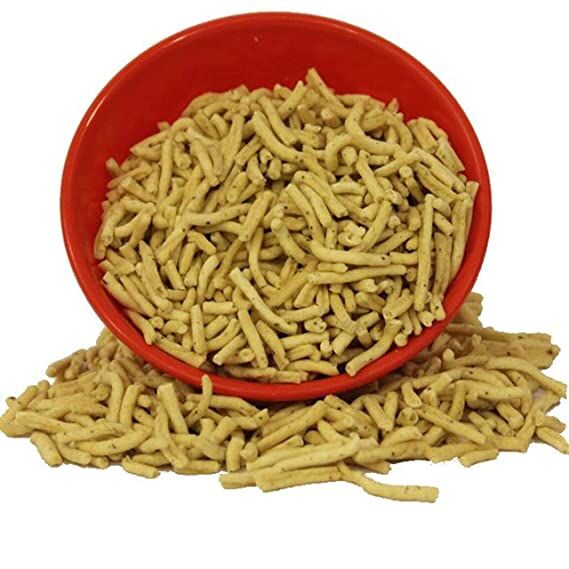Ratlam's culinary delight
Thriving on the distinctiveness of black soil and saline water of the region, the cottage industry of Ratlami sev has managed to stand firm among snazzier snack food companies

Ratlam, an important district town and railway junction in the Malwa region of Madhya Pradesh, derives its name from Ratnapuri — a princely state with rich heritage of culture and cuisine. With an area of 4,861 square kilometres, it is bound by Mandsaur district in the north, Jhabua and Dhar on the south, Ujjain on the east, and Chittorgarh and Banswara districts of Rajasthan on the west. The north is also bound by the Shajapur district of Madhya Pradesh and Jhalawar district of Rajasthan.
This is also the town which lends its name to the geographical heritage tag of Ratlami Sev — a cottage industry which employs thousands of local confectioners; and utilises the gram flour and spices, most of which are sourced locally for the mouth-savouring delicacies that have a vibrant market, not just within the country, but across continents.
The origin of this delectable snack can be traced to the marches of the later Mughals through Malwa during their intermittent wars. During an unscheduled halt, they wanted to have sevaiyan (wheat vermicelli). However, as wheat was not available in the royal camp, and the Bhils (local tribals) were asked to prepare sevaiyan with the ingredients available with them — gram flour and local spices — the delightful predecessor to Ratlami sev was born. It was first called Bhildi sev but, over time, the name Ratlami sev took over.
According to the application filed for the GI indicator in 2014-15, the applicants – Ratlami Sev Evam Namkeen Mandal — averred that the production of the Ratlami sev had been going on for at least 200 years at the household level but, from the first decade of the last century, it has been commercially produced and marketed, the pioneers being the famous Saklecha family of the town.
The soil of Ratlam, and the water sources of the local municipality in which most of the units are operating, have contributed to the unique flavour of this culinary delicacy. Let's first discuss the soil. The area in and around Ratlam district is covered with fertile black soil which is derived from the Deccan trap, and is locally known as the regur or black cotton soil. The texture of this soil varies from loam to clay. The black soil is rich in mineral deposits like lime and ferro-magnesium which make it conducive for the cultivation of chana dal used in the preparation of gram flour. Of equal importance is the special quality of water used for preparing the dough. This water comes from the Dholawad Dam of Ratlam, which collects water from the Mahi river (Jhamar tributary). This water is supplied locally by the municipal corporation of Ratlam. The hardness and salinity of this water contribute in no small measure to render the Ratlami sev crisp and tasty nature. However, it must be noted that Ratlam water is safe for drinking purposes and human health.
What sets this savoury Ratlami sev apart from the rest is the addition of cloves, pepper and other spices during its preparation. The special spice blend makes it spicy and gives it a distinctive taste. Its crisp, yet soft texture and potent taste is enhanced with carom seeds, and its thickness distinguishes it from other kinds of sev. This tangy aromatic crunchy sev serves as a snack, a side-dish, a garnish and an ingredient. The local favourite breakfast of poha is always served with preferably two varieties of sev. Curries prepared are topped with a handful of sev. Even food that normally does not require sev is served with a handful on the side – such is the significance of sev in Ratlam and surrounding areas of Madhya Pradesh, Gujarat and Rajasthan.
Ratlami sev has essentially been a cottage industry in Ratlam and provides employment to thousands of people of the region. It must be noted that these are not vacuum-packed and do not contain any preservatives. Once packed, the Ratlami sev retain their freshness, crispiness and flavour for up to six weeks. It is true that before the grant of the GI seven years ago, there was a major concern among the sev manufacturers that their market would be taken over by the snazzier snack food companies with their nitrogen packaging and deep retail penetration. However, not only has the Ratlami sev stood the test of time, the manufacturers have made good use of the internet, social media and WhatsApp to popularise their products and also make them more affordable. This is in fact a wonderful Made-in-India story, and also gives strength to the One District One Product (ODOP) concept which is being popularised by most state governments. GIs inculcate a sense of pride and belongingness, and also a commitment that come what may, the quality of the product cannot be compromised, as it is part of a grander narrative. So, when you purchase a packet of Ratlami sev, you can be assured that the hands which have put this together are proud of their manufacture!
Views expressed are personal



